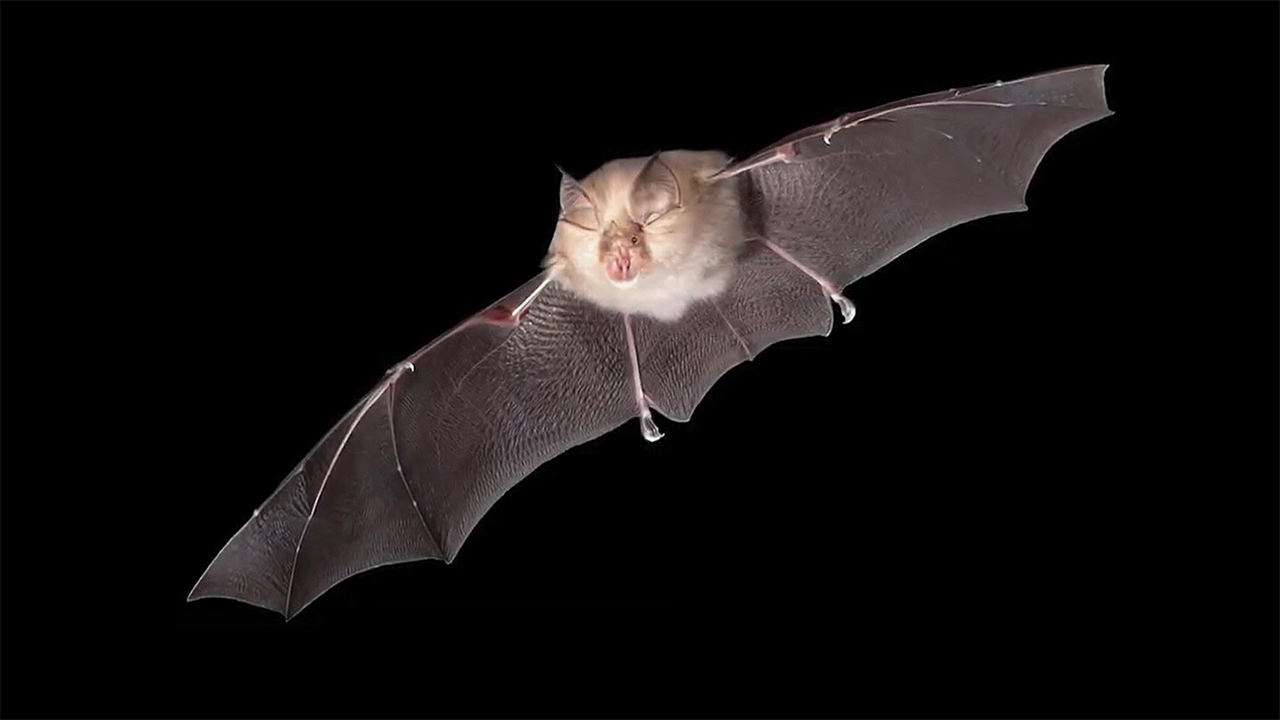Novel Coronavirus Discovered in British Bats – Related to the Virus That Causes COVID-19
0 View
Share this Video
- Publish Date:
- 20 July, 2021
- Category:
- Covid
- Video License
- Standard License
- Imported From:
- Youtube
Tags

horseshoe bat. Credit: University of East Anglia
According to new joint research from the University of East Anglia, ZSL (Zoological Society of London) and Public Health England (PHE), a coronavirus has been found linked to the virus that causes Covid-19 in humans.
However, there is no evidence that this new virus has been transmitted to humans, or that it could in the future unless it mutates.
UEA researchers collected fecal samples from more than 50 lesser horseshoe bats in Somerset, Gloucestershire and Wales and sent them to Public Health England for viral analysis.
Genome sequencing found a novel coronavirus in one of the bat samples, which the team has named “RhGB01.”
It is the first time a sarbecovirus (SARS-related coronavirus) has been found in a lesser horseshoe bat and the first to be discovered in the UK.
There is no evidence that this new virus has been transmitted to humans, or that it could in the future unless it mutates.
The research team says these bats almost certainly harbored the virus for a very long time. And it has now been found, because this is the first time they have been tested.
Importantly, this new virus is unlikely to pose a direct risk to humans unless it mutates.
A mutation can occur if a Covid-19 infected human passes it on to an infected bat, so anyone who comes into contact with bats or their droppings, for example those engaged in caving or bat conservation, should wear appropriate PPE.
Prof Diana Bell, an expert on emerging zoonotic diseases from UEA’s School of Biological Sciences, said: “Horseshoe bats are found in Europe, Africa, Asia and Australia and the bats we tested are in the western extreme of their range.
“Similar viruses have been found in other horseshoe bat species in China, Southeast Asia and Eastern Europe.
“Our research expands both the geographic and species range of these types of viruses and suggests their widespread presence in more than 90 species of horseshoe bats.
“These bats will almost certainly have harbored this virus for a very long time – probably many thousands of years. We didn’t know about it before as this is the first time such tests have been conducted in British bats.
“We already know that there are several coronaviruses in many other mammalian species as well,” she said. “This is a case of ‘search and you will find’.
“Research into the origin of SARS-CoV-2, the virus that causes Covid-19 in humans, has focused on horseshoe bats – but there are some 1,400 other bat species and these make up 20 percent of known mammals.
“Our findings highlight the need for robust genotype testing for these types of viruses in bat populations around the world. And it raises an important question about which other animals carry these types of viruses.”
Prof Andrew Cunningham, from the Zoological Society of London, said: “Our findings highlight that the natural spread of sarbecoviruses and possibilities for recombination through intermediate host co-infection have been underestimated.
“This British virus poses no threat to humans because its receptor binding domain (RBD) – the part of the virus that attaches to host cells to infect them – is not compatible with being able to infect human cells.
“But the problem is that any bat harboring a SARS-like coronavirus can act as a melting pot for virus mutation. So if a bat with the RhGB01 infection we found were to become infected with SARS-CoV-2, there’s a risk that these viruses would hybridize and a new virus would emerge with the RBD of SARS-CoV-2, and thus be able to would be to infect humans.
“Preventing transmission of SARS-CoV-2 from humans to bats, and thus reducing the chances of virus mutation, is critical with the current global mass vaccination campaign against this virus.”
Prof Bell added: “For example, the main risks are that a bat rehab takes care of a rescued animal and infects it with SARS-CoV2 – which would provide an opportunity for genetic recombination if it already carries another sarbecovirus.
“Anyone who comes into contact with bats or their droppings, such as bat rescuers or cavers, should wear appropriate PPE – to reduce the risk of a mutation occurring.
“We need to enforce strict rules worldwide for anyone handling bats and other wildlife,” she added.
The new virus falls within the subgroup of coronaviruses called sarbecoviruses, which includes both SARS-CoV-2 (responsible for the current pandemic) and SARS-CoV (responsible for the first SARS outbreak in humans in 2003).
Further analysis compared the virus to those found in other horseshoe bat species in China, Southeast Asia and Europe and showed that its closest relative was discovered in 2008 in a Blasius bat from Bulgaria.
The British discovery was made by Ivana Murphy, an ecology student, of UEA’s School of Biological Sciences, who collected bat droppings as part of her graduate thesis. Jack Crook conducted the genetic analyzes in collaboration with other researchers at PHE.
A total of 53 bats were captured and their droppings collected in sterile bags. The research was conducted under strict working conditions protocols. Full PPE was worn and Ivana was regularly tested for Covid-19 to avoid any chance of cross-contamination. The bats were released immediately after collecting their droppings.
Ivana said: “My main concern is that people will suddenly become afraid of bats and start persecuting them, which is the last thing I would want and would be unnecessary. Like all wildlife, they pose no threat if left alone.”
Reference: “Metagenomic identification of a novel horseshoe bat sarbecovirus in Europe” by Jack M. Crook, Ivana Murphy, Daniel P. Carter, Steven T. Pullan, Miles Carroll, Richard Vipond, Andrew A. Cunningham, and Diana Bell, July 19, 2021 , scientific reports.
DOI: 10.1038/s41598-021-94011-z










